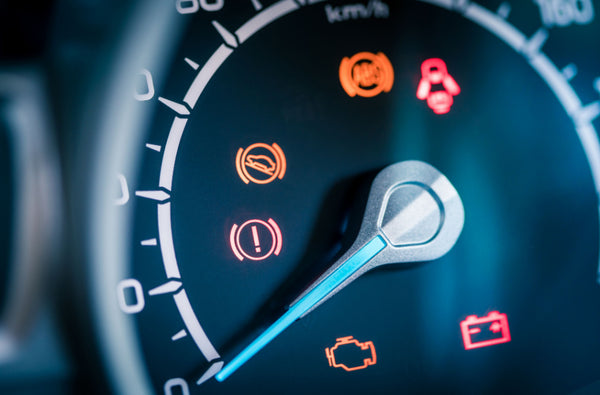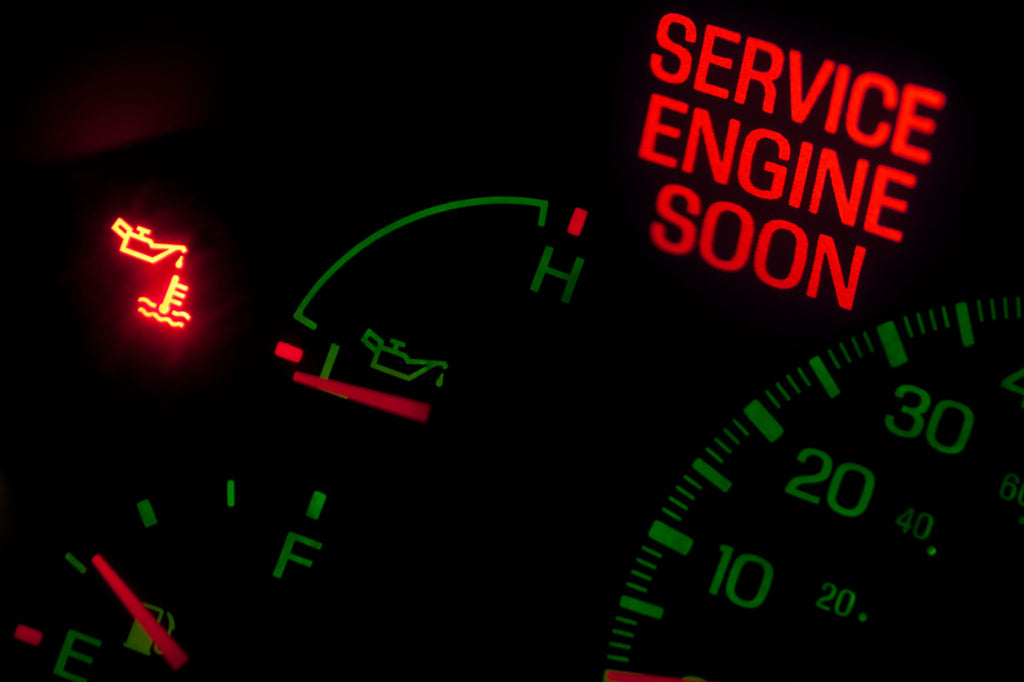What to Do When Your Check Engine Light Comes On
Seeing your check engine light suddenly illuminate can cause immediate distress. However, while the check engine light often means something is amiss, it does not necessarily indicate a significant mechanical issue. Understanding what your check engine light means and how to respond appropriately can save you money and headaches. This guide will explain ordinary check engine light causes, how to diagnose issues, and appropriate actions.
What Does the Check Engine Light Indicate?
The check engine light, the malfunction indicator lamp (MIL), is an auto warning system tied to your vehicle's onboard diagnostics computer (OBD-II). It illuminates whenever the computer detects an issue with your vehicle's emissions system or other vital components.
A loose gas cap is one of the most common triggers for the check engine light. But faulty oxygen sensors, bad spark plugs, faulty mass airflow sensors, and even a damaged catalyst converter can cause your check engine light to turn on.
In older vehicles, diagnosing the issue requires specialized OBD scan tools plugged into your diagnostic port. But most vehicles from 1996 onward have standardized OBD-II ports that auto parts stores can scan for codes pointing to the source of the issue.
Should You Keep Driving with the Check Engine Light On?
Seeing the check engine light come on can be an unsettling experience. It's normal to wonder if your vehicle can still operate immediately. The good news is, in most situations, it remains acceptable to drive temporarily. Typically, driving is not recommended only if you experience a noticeable performance loss, such as severe power reduction. Otherwise, driving short distances should pose no issue with proper precautions. The light should always be addressed as continuing to drive unchecked risks exacerbating minor issues into significant repairs down the line.
However, it would help if you minimized extended driving with the check engine light on. While the light often indicates a minor issue, ignoring it risks more severe problems and damage over time. For example, driving long distances with a misfiring spark plug can burn out your vehicle's catalytic converter.
Pay attention to how your vehicle runs and handles when the check engine light appears. If you experience noticeable problems like the following, avoid driving your vehicle or have it towed to a shop:
- Loss of engine power
- Shaking/misfiring
- Unusual noises
- Leaks or burning smells
- Overheating engine
- Transmission shifting issues
Without noticeable performance problems, you can safely drive your vehicle short distances with the check engine light on. Just avoid extended trips and seek diagnosis and any necessary repairs promptly.

Deciphering Common Check Engine Light Codes
Once you safely bring your vehicle to a stop, you can use an OBD-II scan tool to read trouble codes that indicate the likely source of the check engine light. DIY enthusiasts can purchase inexpensive code readers, but many auto parts stores will also scan codes for free. Consider clearing any old error codes so you only get active ones.
Here are some of the most common OBD check engine codes and what they typically indicate:
P0301, P0302, P0303, P0304: Misfiring cylinder issue. A bad spark plug or ignition coil usually causes it.
P0420: Catalytic converter issue due to oxygen sensor discrepancies. It often only needs oxygen sensor replacement.
P0440, P0441, P0442, P0443: Evaporative emissions system leak detected—usually a loose gas cap.
P0455: Large evaporative emissions leak indicating possible leaks, holes in hoses/tubing.
P0171, P0174: System running too lean/rich. This could indicate issues with mass airflow or oxygen sensors.
When to Seek Professional Diagnosis
DIYers equipped with scan tools can often identify and fix check engine light issues themselves. If the check engine light persists, simple problems like loose gas caps require double-checking the cap and clearing codes afterward.
However, seeking a professional diagnosis is wise if you're unfamiliar with working on vehicles, lack the proper tools, or need help understanding the implications of specific fault codes. An experienced mechanic will know how to accurately diagnose even complex, intermittent issues. This avoids misguided attempts to fix the wrong component.
Seeking professional help immediately is especially prudent when noticeable vehicle operation issues accompany the check engine light. Don't hesitate to take your vehicle to a trusted mechanic if you experience:
- Sudden loss of power
- Unusual noises, misfiring or shaking
- Transmission issues or trouble accelerating
- Overheating engine
- Strong burning smells
In these cases, pushing on or fixing things yourself risks exacerbating the issues and leading to costlier repairs. Get professional help to diagnose problems and make fixes accurately.
Steps to Interpret and Address Your Check Engine Light
If your check engine light illuminates, remain calm and follow these steps:
1. MOVE SAFELY OFF THE ROAD
If driving, signal and pull off the road safely at your earliest opportunity. Pull over immediately if you notice any power loss or performance issues.
2. RETRIEVE ANY DIAGNOSTIC CODES
Use an OBD-II scanner to retrieve check engine light codes. Auto parts stores will often do this complimentary. Take note of the code identifiers.
3. EVALUATE VEHICLE DRIVEABILITY
Determine if the vehicle seems safe to drive short distances to a shop based on factors covered earlier. If losing power or otherwise compromised, have it towed instead?
4. RESEARCH CODE DEFINITIONS
Look up codes online through databases to identify the likely cause. Consider clearing codes and then rechecking current codes afterward.
5. ASSESS YOUR DIAGNOSTIC CONFIDENCE
Determine if you feel comfortable diagnosing and addressing the issue or would prefer professional assistance.
6. SEEK REPAIRS
For minor issues, make easy fixes like replacing gas caps yourself. For more complex issues or uncertainty, seek help from a trusted professional mechanic instead.
7. VERIFY REPAIRS FIXED ISSUES
Drive the car to confirm issues are resolved. Retest systems. Clear any remaining codes. Check later to ensure the engine light stays off.
Following these steps helps ensure you never overreact or make matters worse when your check engine light illuminates unexpectedly. Stay calm, diagnose codes and issues accurately, seek help when prudent, and take action to resolve the underlying problem. Patience and the right approach keep your vehicle running smoothly.
Be sure to check out our online inventory for all your aftermarket auto parts.


